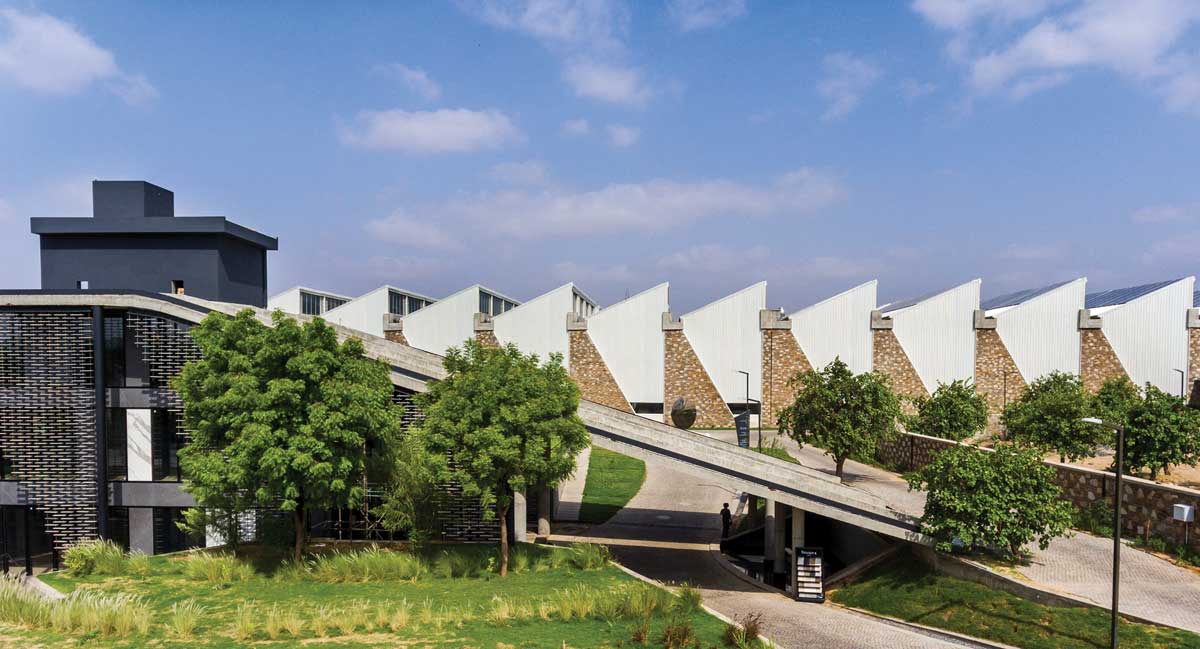
The orientation and design of the building facilitates climate responsiveness. The hot and dry climate of Rajasthan is combated by the partly sunk mass, staying cool during summers and warm during winters. This is achieved by the natural phenomena of Earth Berming and Earth Coupling. The temperatures indoors are regulated with the help of radiant cooling, allowing for a 60% efficiency in the running cost of the building. Also, this has led to HVAC load cutting by almost 40%. The floor slabs are additionally radiant cooled to regulate temperatures.
Architecture has opted to campaign human life by forcing better working conditions, physical and emotional well-being, and thereby ensuring better communities and a richer built environment
Dinesh Panwar, Principal Architect, Urbanscape Architects
Impact of Stone Façade on Urban Structure
The skin of the Office building sandwiches a puff panel between two laminam panels to further insulate the interiors. The façade is complemented by an enveloping stone screen that is fabricated using the waste stone from a nearby quarry and the stone wastage that is generated on site. This screen provides solar shading from the south-east and west glare. A playful, visual appeal is created by the light and shadow of interwoven stone blocks that appear to be floating at different levels.
The facade of the Stonex office has the bearing of a rubble wall and the fluidity of a metal sheet, expressing the ageless and enduring nature of stone as a material. A buttress conceptualised in a contemporary form holds the structure together and a stone slate functions as a shading device for the office. The stone screen complements the rubble façade showcasing the versatility of stone. The design in its entirety stands as a testament to the ethos of strength and perfection, conceived as an unassuming and environmentally perceptive complex.
The processing plant and display area are both well insulated, using local rubble walls of 550mm thickness towards the east facade and insulated galvalume sheet in the triangular flutters - with a blank facade towards the west. Glazing and lovers at the lower level help the viewer connect visually with the landscaped surroundings while the louvers and glazing towards the north light develop a wind draft to release hot air inside and bring north light inside. While the local rubble masonry facilitates the passive design in order to optimize the climatic conditions, there is also an intent to involve the local masons and empower the craft and the craftsmen.
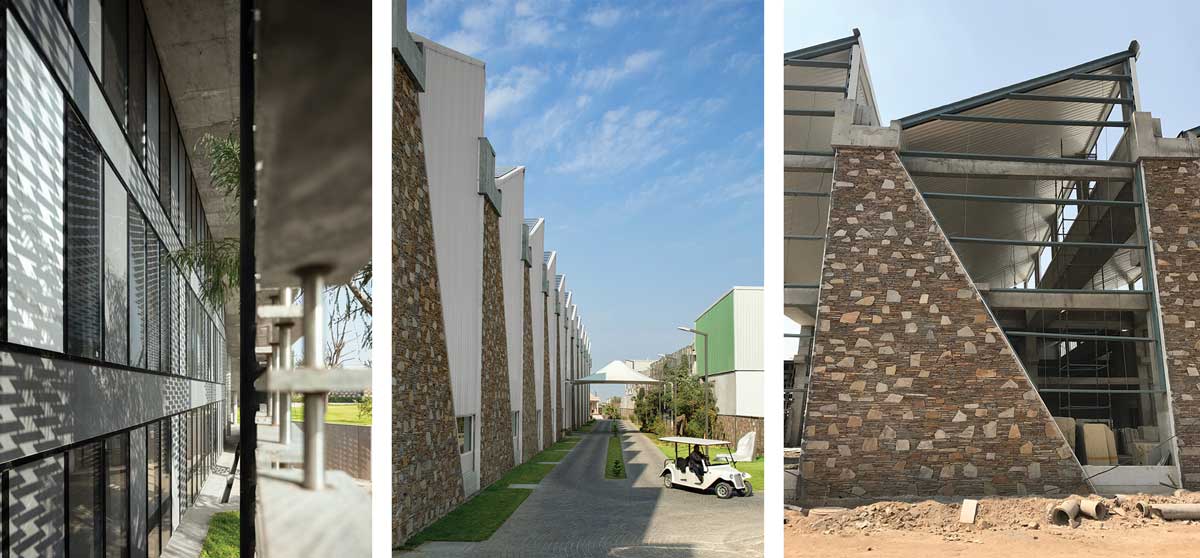
The Industrial Shed
Adhering to exigencies of site and logistically sound planning, the manufacturing block orients rather unconventionally in the East-West direction. The finished product of the factory demands uniform lighting throughout the day, with no exposure to direct sunlight. Hence, the orientation is strategically exploited by incorporating complementary systems: North light trusses are introduced to penetrate the complete volume, sloping at a suitable angle of 23 degrees towards the south, providing for ample surface for photovoltaic panels and the resulting solar roof of almost 1MW (enough to fulfill the power requirements of the factory). Long concrete gutters have been planned to avoid water leakage and facilitate maintenance instead.
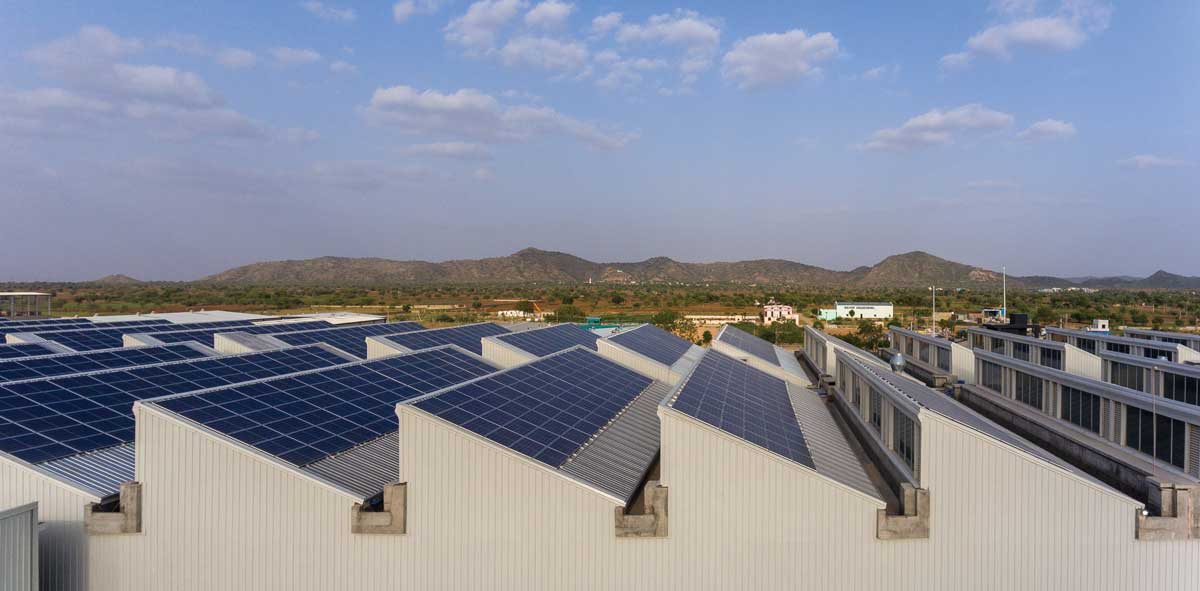
Functionality Drives the Design
The linear production process is used as a design determinant to avoid the workers being forced to do manual lifting, prone to accidents, which is otherwise a common process. Two people can, therefore, bring in a 25 ton block from one end, process it, display it, and dispatch it on their own.
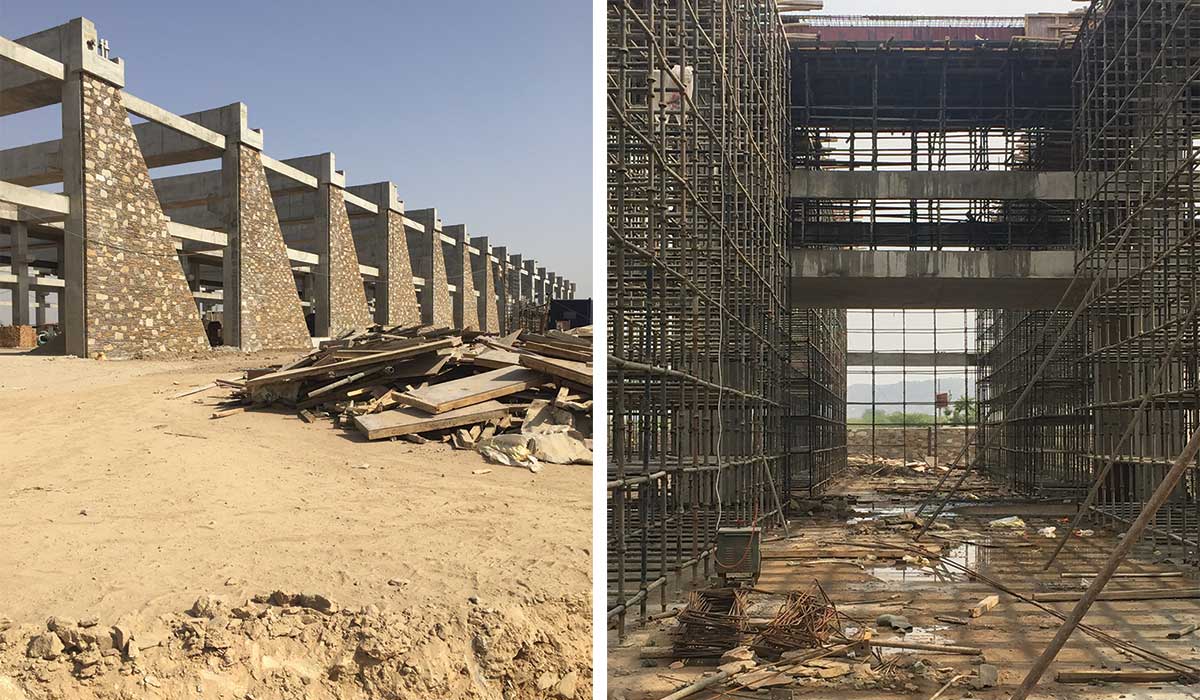
Prefabricated white metal flutters give the entire structure a buoyant profile, when looked at from afar. The stone buttresses make the building appear grounded at a more proximal viewing. The sides facing east and west are mostly blank, barring the small windows that connect the occupants with the surroundings. The windows also create a wind draft across the height of the shed expelled through the ventilators along the north light trusses, thereby avoiding hot pockets at the top and effectively cooling the building by about 10-12 degrees.
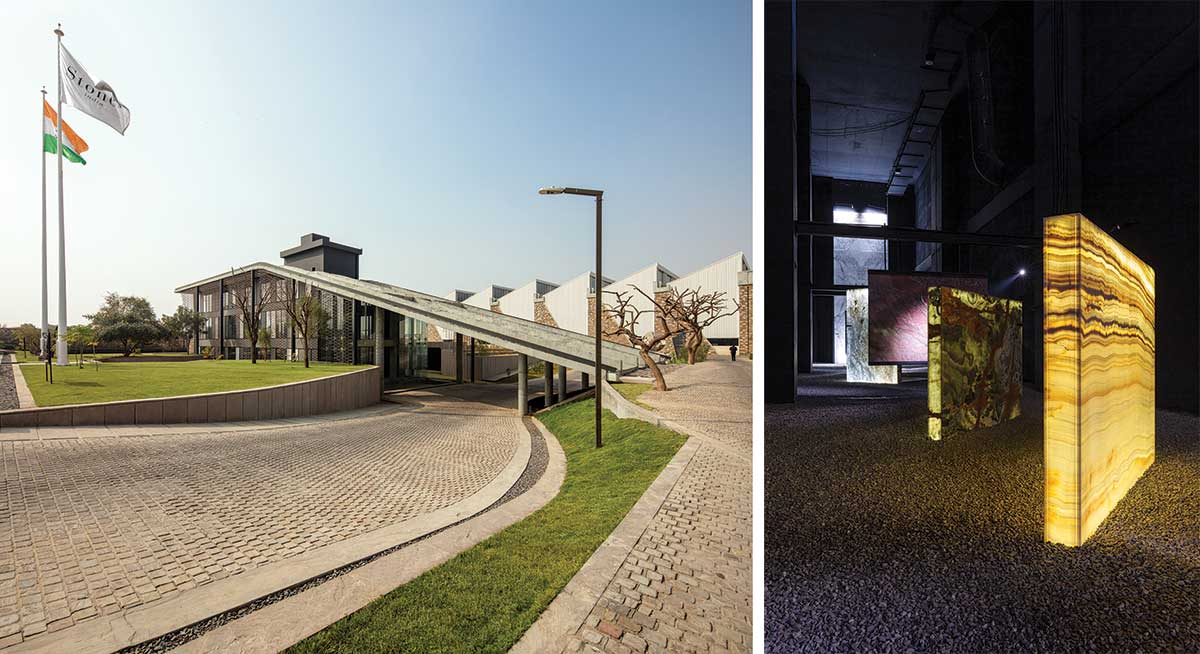
Sustainable Measures
The building is designed such that the spaces are used judiciously, allowing for maximum possible green cover and soft scaping. Other sustainable measures include the use of bio STPs that recycle wastewater and use it for landscaping and flushing toilets, 100% rainwater harvesting that keeps the groundwater table recharged, and soft scraping inside that aids the creation of shaded areas to create a microclimate and keep overall temperatures of the facility low.
















